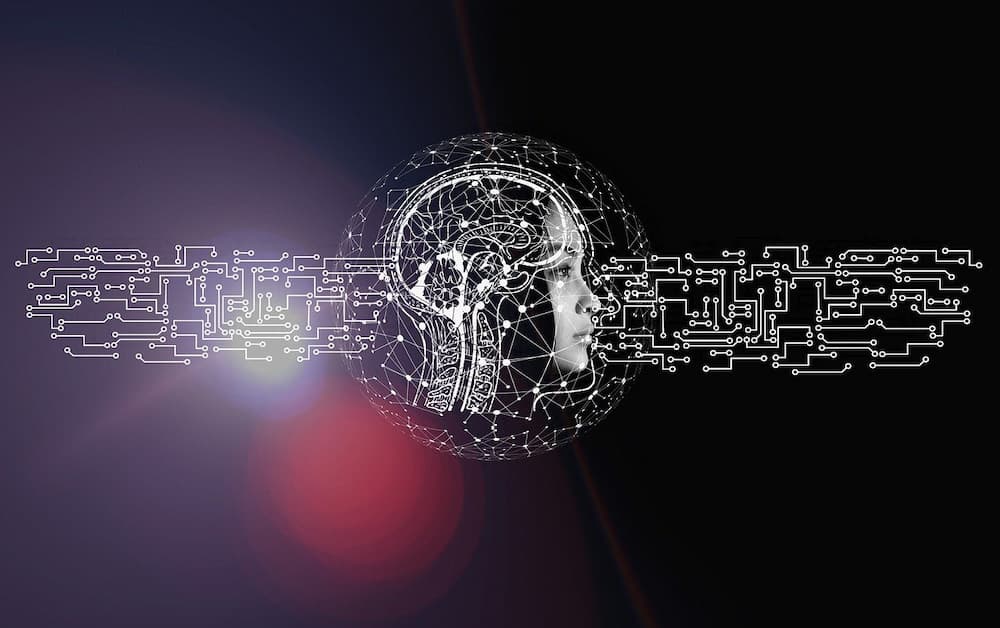Introduction
The European Union’s AI Act represents a groundbreaking development in AI regulation. Recently, a political deal was reached between the European Parliament and the Council, solidifying comprehensive rules for trustworthy AI in Europe. The agreement emphasizes safety, respect for fundamental rights, and preserving democratic values in AI applications. The Act focuses on identifiable risks associated with AI, fostering responsible AI development and transposing European values into the evolving technological landscape.
Recent developments include a proposal for targeted harmonization of national liability rules for AI, complementing the AI Act’s framework. Legislators aim to ban AI in biometric surveillance, with some EU countries, including France, leading in this initiative. The Act employs a risk-based approach, regulating products or services using AI and focusing on AI technology’s ethical and responsible use. The EU AI Act signifies a pioneering step towards establishing comprehensive AI regulations, setting a global standard for responsible and ethical AI development.
EU AI Act defines AI systems
The field of artificial intelligence (AI) has rapidly evolved over the years, with promising applications in various industries. However, the potential risks associated with AI systems have also been a growing concern. To address this, the European Commission has established a regulatory framework that categorizes AI systems based on their risk levels.
The four categories of AI systems are as follows: Unacceptable Risk, High Risk, Limited Risk, and Minimal Risk. This classification ensures that regulatory measures are tailored to the specific risks associated with each AI technology. While Minimal Risk AI systems, such as spam filters or chatbots, are not subject to any specific regulatory requirements, High-risk AI systems, such as medical devices or social scoring systems, undergo stringent scrutiny, promoting safety and accountability.
High-risk AI systems are subject to mandatory requirements, such as risk assessments, transparency obligations, and human oversight. This regulatory approach ensures that the most serious risks associated with AI are identified and mitigated, while also enabling the development and deployment of safe and innovative AI technologies.
Risk-based approach
The EU AI Act is a framework that employs a risk-based approach as a cornerstone. This methodology involves the evaluation and analysis of potential harm that AI systems may cause, thus necessitating appropriate regulatory interventions. By assessing risk levels, the Act aims to balance innovation and protection, fostering responsible AI development.
The risk-based approach is based on a thorough analysis of the potential risks associated with AI technologies, including considerations of their intended use, the potential impact on individuals and society, and the level of transparency and accountability of the AI system. The EU AI Act recognizes that AI technologies have the potential to bring about significant benefits, but they also carry significant risks, and it is crucial to ensure that they are developed, deployed, and used in a responsible and ethical manner.

Trustworthy AI and human-defined objectives
The European Union’s Act on Artificial Intelligence puts significant emphasis on the development of trustworthy AI systems that are aligned with human-defined objectives. In other words, the Act aims to ensure that AI technologies operate in a way that adheres to ethical guidelines and contributes positively to societal progress. This represents a significant shift in the way that AI development is approached, with a newfound recognition of the importance of human oversight in guaranteeing that AI systems align with European values and fundamental rights.
By prioritizing transparency, accountability, and the protection of individual rights, the Act seeks to create a regulatory framework that fosters innovation while safeguarding against potential risks and abuses of power. Overall, the Act is aimed at promoting the responsible development and deployment of AI technologies and represents an important step towards achieving a more human-centric approach to AI development.
Biometric identification and facial recognition
In AI, biometric identification and facial recognition are among the most significant technologies. They can be used for a variety of purposes, such as security, surveillance, and identification. However, when these technologies fall within the high-risk category, they can pose serious implications for individuals’ privacy and fundamental rights.
To address these concerns, the European Union has introduced the AI Act, which imposes strict regulations on the use of biometric identification and facial recognition technologies. The Act requires that these technologies be subject to human supervision and comprehensive risk assessments before they can be used.
One of the primary aims of the AI Act is to protect individual rights, such as the right to privacy and data protection. To achieve this, the Act requires that biometric data usage be subject to stringent safeguards, including the provision of clear information to individuals, the establishment of specific purposes for data processing, and the implementation of appropriate technical and organizational measures to ensure data security.
Regulatory sandboxes for innovation
The European Union AI Act has been developed with a view to promoting innovation and growth in the field of artificial intelligence, recognizing its critical importance in today’s world. One of the key features of the Act is the introduction of regulatory sandboxes, which are designed to provide a safe and controlled environment for the testing and development of AI technologies.
These regulatory sandboxes are aimed at striking a balance between innovation and regulatory compliance, ensuring that advancements in AI are made while maintaining robust oversight of the industry. By allowing innovators to test their AI technologies under controlled conditions, the EU AI Act is expected to promote the development of cutting-edge technologies that can benefit society as a whole.
The regulatory sandboxes are intended to act as a bridge between the innovative spirit of the AI industry and the need for regulatory oversight. By providing a platform for testing and development, the sandboxes will enable innovators to experiment with new ideas and approaches, while ensuring that any risks associated with the use of AI are identified and addressed before the technologies are deployed in the real world.

Ensuring compliance and non-discrimination
The European Union’s AI Act is a comprehensive legal framework that sets out stringent regulations to ensure compliance and ethical use of AI systems. The Act mandates that organizations employing AI systems must adhere to strict rules and guidelines, with significant penalties for non-compliance.
The legislation also emphasizes the importance of mitigating the risks of bias in AI decision-making processes, with measures in place to safeguard against discrimination and promote transparency in AI systems. The EU AI Act aims to create a safe, trustworthy, and responsible AI environment in Europe, fostering innovation and protecting the rights and dignity of individuals.
Role of the European Artificial Intelligence Board
The EU AI Act is a comprehensive framework that sets out rules for the design, development, and deployment of artificial intelligence systems in Europe. At the center of this regulatory landscape is the European Artificial Intelligence Board, which plays a vital role in ensuring the Act’s successful implementation.
This governing body is responsible for overseeing the application of the EU AI Act and provides guidance to member states on how to comply with its provisions. The Board also works to promote a harmonized approach to AI regulation across Europe, which is essential to ensure a level playing field for businesses and prevent fragmentation of the digital single market.
In addition to its regulatory functions, the European Artificial Intelligence Board serves as a forum for stakeholders to share best practices and discuss emerging trends and challenges in the field of AI. This fosters collaboration and innovation, which is critical to the development of ethical and trustworthy AI technologies that benefit all citizens. Overall, the Board’s role is crucial in creating a cohesive and effective regulatory landscape for AI in Europe.
Foundation models and large language models
As the field of AI continues to advance, the European Union has taken steps to address the increasing complexity of AI models. The EU AI Act now includes specific regulations for both foundation models and large language models, two advanced AI technologies that are widely used across various industries. Due to their powerful capabilities, these models pose unique risks that must be mitigated through careful regulation and oversight. The regulations aim to ensure that these AI models are developed and used in a safe and responsible manner, while also promoting innovation and growth in the field of AI.

Impact on decision-making and social scoring systems
The Act in question, which is aimed at regulating the use of AI-powered systems in various industries, has a significant impact on decision-making processes and social scoring mechanisms. One of the key objectives of this legislation is to promote transparency and accountability in the decision-making process, particularly in cases where AI algorithms are used to score individuals based on their behavior or other factors.
By ensuring that AI-powered systems are subject to scrutiny and oversight, the Act seeks to prevent the misuse of data in social scoring systems. This is important because it can help prevent discriminatory practices that unfairly target certain groups of people based on their personal characteristics, such as race, gender, or age.
Data governance and risk management
The regulatory landscape in the field of AI places a significant emphasis on data governance and risk management. The EU AI Act, in particular, sets out comprehensive frameworks for responsible data use, which require organizations to implement strong and effective risk management strategies. This is done with the overarching goal of minimizing the potential harms that may arise from the use of AI systems.
The EU AI Act also stresses the importance of transparency and accountability in the use of AI so as to ensure that the technology is developed and used responsibly and in the best interest of society as a whole. The Act lays down the groundwork for the development of ethical AI practices and encourages collaboration and cooperation between all stakeholders in the AI ecosystem.
Development of harmonized rules
The EU AI Act places significant emphasis on the establishment of harmonized rules governing the development and deployment of AI technologies. This is a crucial step towards creating a unified approach to AI regulation across all the member states, with the ultimate objective of fostering consistency and facilitating smoother cross-border collaborations in the field.
The harmonized rules are expected to provide a framework for the ethical and safe use of AI systems and technologies, with a focus on promoting transparency, accountability, and human oversight. The EU AI Act is a milestone in the history of AI regulation, providing a comprehensive and forward-thinking framework that balances the opportunities and challenges presented by this transformative technology.
Non-compliance and penalties
The EU AI Act imposes significant penalties for non-compliance, emphasizing the importance of adhering to its comprehensive rules. The fines for violations are calculated as a percentage of the offending company’s global annual turnover in the previous financial year. The penalties range from administrative fines of up to 5,000,000 EUR or 1% of annual worldwide turnover for providing incorrect, incomplete, or misleading information, to fines of up to 30,000,000 EUR or 6% of the total worldwide turnover for more severe infringements.
Specifically, Article 71 of the EU AI Act outlines penalties related to operators or notified bodies, with administrative fines of up to 20,000,000 EUR for certain infringements. Non-compliance with other requirements relating to high-risk AI systems may result in fines of 10 million EUR or 2% of the offender’s turnover. Providing false or misleading information is also subject to fines under the Act.
These penalties are designed to ensure accountability and encourage organizations to comply with the AI Act’s regulations, reinforcing the commitment to responsible and ethical AI development.

Considered high risk: Biometric surveillance and other systems
As the use of AI systems becomes more widespread, there is a growing need to ensure that high-risk AI applications, such as biometric surveillance, are subject to rigorous scrutiny. The European Union (EU) recognizes this need and has established specific guidelines for such systems under the recently introduced AI Act. These guidelines aim to mitigate potential risks associated with these advanced AI technologies and protect individual privacy. The EU AI Act is a clear indication of the EU’s commitment to addressing the challenges posed by the development and deployment of novel AI applications and fostering a sustainable and responsible approach to AI governance in the region.
Open letter to ensure ethical AI development
The European Union’s AI Act has recently gained more attention, as it is now being complemented by an open letter that emphasizes the commitment to the ethical development of AI technologies. This collective pledge is a significant step towards reinforcing the importance of responsible AI innovation and aligning all stakeholders towards creating a positive and sustainable AI landscape. The open letter is signed by a diverse group of organizations and industry leaders, who recognize the potential impact of AI on society and are committed to ensuring that its development is guided by ethical principles and values. It is hoped that this pledge will inspire more organizations to prioritize the ethical development of AI technologies and promote transparency, accountability, and human rights in the use of these technologies.
Conclusion
As we move forward, technology is constantly advancing, and along with it, the regulatory landscape is evolving. To ensure that innovation doesn’t come at the expense of fundamental rights, comprehensive AI regulation is essential, and the European Union’s AI Act sets a precedent in this regard. It outlines clear guidelines for the development and deployment of AI systems, with a focus on transparency, accountability, and ethical considerations.
However, the regulatory framework can’t be static. As new technologies emerge, it’s necessary to evaluate and adapt the existing regulations to ensure that they continue to be effective. The EU AI Act is a living document that will evolve over time, incorporating new and emerging technologies.
Future iterations of the AI Act are likely to address new challenges and technological advancements, ensuring that the regulation keeps pace with the rapid evolution of AI. This will help to maintain a balance between innovation and safeguarding fundamental rights and ensure that AI is developed and deployed in a manner that benefits society as a whole.




